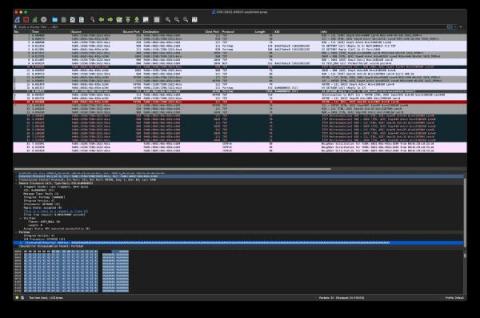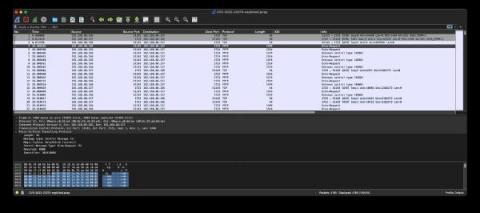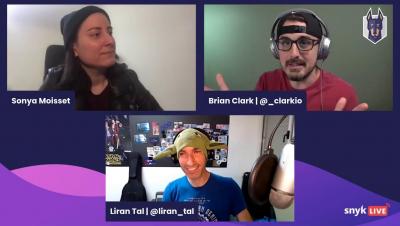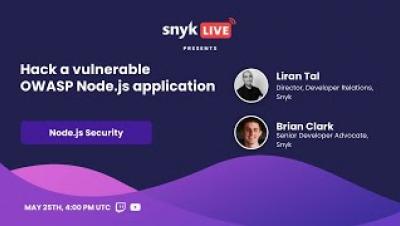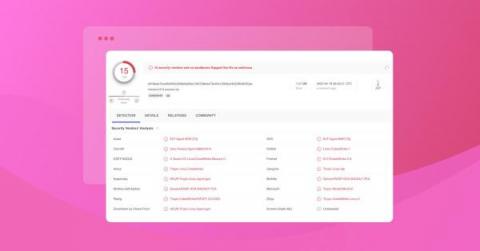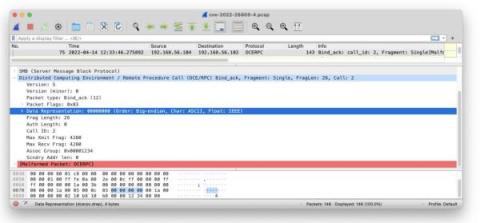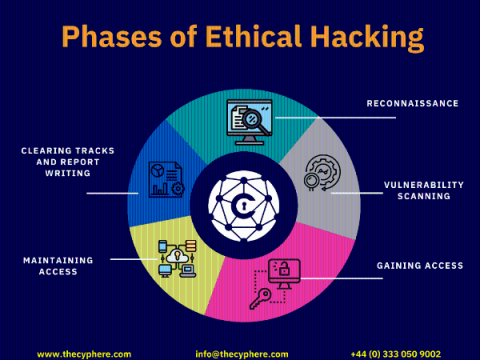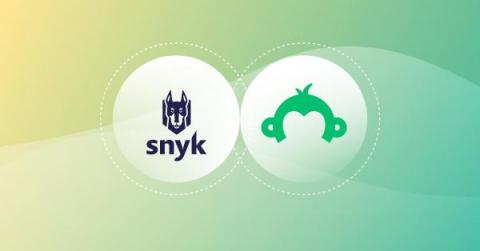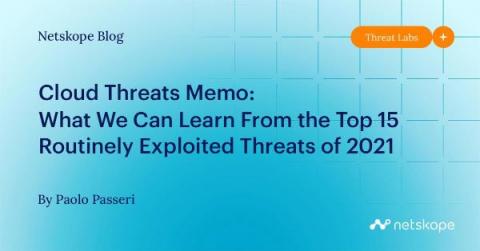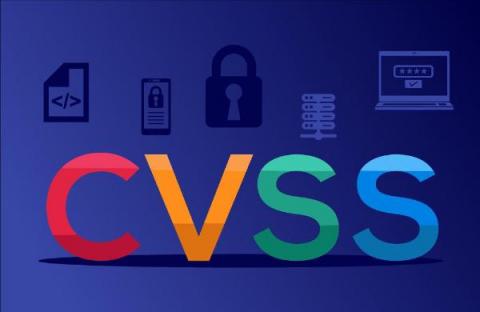Security | Threat Detection | Cyberattacks | DevSecOps | Compliance
May 2022
RCE à La Follina (CVE-2022-30190)
If you want just to see how to find detections for the Follina MS Office RCE, skip down to the “detections” sections. Otherwise, read on for a quick breakdown of what happened, how to detect it, and MITRE ATT&CK mappings.
Penetration Testing To Prevent API Attack
This blog describes the attack path we have uncovered during a recent penetration test of a web application, coupled with a back-end infrastructure assessment. Throughout we introduce different attack techniques and tools that can be used to attack the underlying infrastructure and APIs of a web application.
Vulnerability Scanners: Passive Scanning vs. Active Scanning
Detecting CVE-2022-26937 with Zeek
This month, Microsoft announced a vulnerability in NFS. The exploit lies in how an attacker can force a victim NFS server to request an address from the attacker’s fake NFS server. The address returned will overflow memory on the victim NFS server and cause a crash. Through Microsoft’s MAPP program, Corelight Labs reviewed a proof-of-concept exploit for this vulnerability and wrote a Zeek®-based detection for it. You can find a PCAP of this exploit in our GitHub repository.
Detecting CVE-2022-23270 in PPTP
This month, Microsoft announced a vulnerability in PPTP, a part of the VPN remote access services on Windows systems that runs on port 1723/tcp. Through Microsoft’s MAPP program, Corelight Labs reviewed a proof of concept exploit for this vulnerability and wrote a Zeek®-based detection for it.
JavaScript Live Panel with Snyk Ambassadors
Are your Apple devices safe from the latest vulnerabilities?
Apple has recently released OS updates for multiple operating systems, addressing known and exploited security vulnerabilities along with previously unknown ones. During the past week, various data security organizations like the US Cybersecurity and Infrastructure Security Agency and Indian Computer Emergency Response Team have issued warnings asking users to install the latest updates on their Apple devices as soon as possible to avoid possible exploitation of devices and device data.
Hack a vulnerable OWASP Node.js app
Performance improvements, snappier ports, and spring cleaning
The vulnerabilities page allows you to see all findings across your attack surface. This includes simple filters that let you specify what you want to focus on, including the level of severity, which domains you want to look at, and whether it was found in the past week or the past month.
Snyk finds 200+ malicious npm packages, including Cobalt Strike dependency confusion attacks
Snyk recently discovered overt 200 malicious packages in the npm registry. While we acknowledge that vulnerability fatigue is an issue for developers, this article is not about the typical case of typosquatting or random malicious package. This article shares the findings of targeted attacks aimed at businesses and corporations that Snyk was able to detect and share the insights.
Credit Card Fraud Investigation: State of Underground Card Shops in 2022
In our latest credit card fraud investigation blog our threat intelligence analysts investigate the current card shop ecosystem, from active shops and the return of Rescator as well as other recently shuttered card shops and credit card fraud to look out for. Methodology Credit Card Fraud Investigation: Active Card Shops Credit Card Fraud Investigation: Inactive Card Shops Conclusions
Finding CVE-2022-22954 with Zeek
CISA released a warning to federal agencies on May 18 that APT actors are actively exploiting recent vulnerabilities found in VMware, including CVE-2022-22954. Your first thought may have been to want new signatures, indicators, and/or behavioral techniques to detect attempted and successful exploits. If you’re a Zeek user or Corelight customer, you’ll find that sometimes you’re already getting what you need.
How LiveRamp used Snyk to remediate Log4Shell
Like any company that uses web apps or enterprise software built with Java, San Francisco-based LiveRamp was concerned that it had been infected by the Log4Shell zero-day vulnerability within Log4j — the popular open source logging library.
Mitigating controls for cloud-native applications: Why you need them and how Calico Cloud can help
Fixing vulnerabilities can be hard—especially so for cloud-native applications. Let’s take a deeper look at why this is, and how mitigating controls can help secure your cloud-native applications.
Critical Authentication Bypass Vulnerability in VMware Products - CVE-2022-22972
CyRC Vulnerability Advisory: Sensitive data exposure in JSON enables account compromise in Strapi
Scan your software packages for security vulnerabilities with JFrog Xray
Scanning your packages for security vulnerabilities and license violations should be done as early as possible in your SDLC, and the earlier the better. This concept is also known as “Shifting Left”, which helps your organization comply with security policies and standards early on in the software development process. As developers, this may seem like a hassle, but with JFrog CLI it’s easy!
The State of Ransomware in 2022
Ransomware continues to be a prevalent threat to almost every modern industry after a sudden renaissance at the beginning of the COVID-19 pandemic as threat actors sought to capitalize on overwhelmed organizations and their suddenly vulnerable employees. It poses a particular danger to companies that hold sensitive data and house valuable assets, or those that could impact countless other industries and organizations should their critical operations be taken offline.
Vulnerability Remediation: A Practical Guide
To stay ahead of malicious attacks, developers and security teams must have a way to identify, prioritize, fix, and monitor vulnerabilities, a process known as vulnerability remediation. When it comes to detection, organizations can use a variety of application security testing (AST) tools to identify vulnerabilities in software applications and other systems.
Another day, another DCE/RPC RCE
CVE-2022-26809 was patched in Microsoft’s previous Patch Tuesday (April 12) and it’s a doozy: remote code execution on affected versions of DCE/RPC hosts. The vulnerability attracted a lot of attention in the security community, both because of its severity but also because it appears to be really hard to trigger.
Critical Unauthenticated RCE Vulnerability in Zyxel Firewalls - CVE-2022-30525
How to Prevent the Next Log4j Style Zero-Day Vulnerability
Software testing is notoriously hard. Search Google for CVEs caused by basic CRLF (newline character) issues and you’ll see thousands of entries. Humanity has been able to put a man on the moon, but it hasn’t yet found a proper way to handle line endings in text files. It’s those subtle corner cases that have a strong tendency of being overlooked by programmers.
PoC Exploit for Active Directory Certificate Services Vulnerability (CVE-2022-26923) Creates Path to Domain Admin
The importance of security automation
Security is a critical, if somewhat overwhelming, task for any organization. As products grow and teams expand, the challenge of maintaining a security posture at scale increases as well. This is where automation comes in. The ability to automate security tasks offers obvious benefits such as increased speed, while also driving deeper shifts in a company’s culture and processes.
Two-factor authentication misconfiguration bypass
Springing 4 Shells: The Tale of Two Spring CVEs
The Splunk Threat Research Team (STRT) has been heads-down attempting to understand, simulate, and detect the Spring4Shell attack vector. This post shares detection opportunities STRT found in different stages of successful Spring4Shell exploitation. At the time of writing, there are two publicly known CVEs: CVE-2022-22963, and CVE-2022-22965. The Splunk Security Content below is designed to cover exploitation attempts across both CVEs.
Impact Analysis: CVE-2022-29218, Allows Unauthorized Takeover of New Gem Versions via Cache Poisoning
It’s been a bad month for RubyGems vulnerabilities. Critical CVE-2022-29176 was issued May 8, 2022, and another critical CVE-2022-29218 was discovered less than a week later, on May 11. This new vulnerability would allow for a takeover of new versions of some platform-specific gems under certain circumstances.
Trustwave's Action Response: F5 BIG-IP Vulnerability (CVE-2022-1388)
Trustwave SpiderLabs is tracking a new critical-rated vulnerability (CVE-2022-1388) affecting F5 BIG-IP network devices. Threat actors are reported to be actively exploiting this vulnerability in the wild. F5 disclosed and issued a patch for CVE-2022-1388 on May 4. We are diligently watching over our clients for exposure and associated attacks and working closely with our clients to ensure that mitigations are in place.
FTSE 100 credential theft study 2022
Corporate credential theft is a targeted effort and makes FTSE 100 companies credentials particularly attractive to cybercriminals with accelerated digital transformation (BYOD and hybrid working). Once an attacker gets hold of stolen user credentials and passwords, they can sell the credentials in the cybercrime underground or use them to compromise an organization’s network, bypassing security measures and threaten the credibility and integrity of the institution.
Impact Analysis: RubyGems Critical CVE-2022-29176 Unauthorized Package Takeover
On May 6, 2022, a critical CVE was published for RubyGems, the primary packages source for the Ruby ecosystem. This vulnerability created a window of opportunity for malicious actors to take over gems that met the following criteria: Because RubyGems provides data dumps that include a lot of information, it is unfortunately relatively simple to create an automated mining process for these criteria.
Newly minted filters, improvements to bulk actions, and SSL assessments
Remediating vulnerabilities efficiently is the cornerstone of a great vulnerability management program. Prioritizing becomes paramount as resources are often limited. Sometimes teams might pinpoint specific vulnerability types that are particularly risky for their attack surfaces, such as a misconfigured Amazon S3 bucket or even a new XSS vulnerability. Users can now filter the /Vulnerabilities view by title, such as a specific type of XSS or even the CVE name.
Spotting Log4j traffic in Kubernetes environments
Editor’s note: This is the latest in a series of posts we have planned over the next several weeks where we explore topics such as network monitoring in Kubernetes, using sidecars to sniff and tunnel traffic, show a real-world example of detecting malicious traffic between containers, and more! Please subscribe to the blog, or come back for more each week.
BIG-IP iControl REST Critical Authentication Bypass Vulnerability - CVE-2022-1388
CyRC Vulnerability Advisory: Reflected cross-site scripting in Black Duck Hub
Happy 1st Birthday, Snyk Code!
Snyk Code is turning one! We’ve hit so many milestones in the last 12 months, and today we invite you to look back, celebrate, and peer into the future of code security with us.
25+ Vulnerable websites to practice your ethical hacking skills
In recent times as the field of information is on the rise a new term ‘Ethical Hacking’ has emerged and opened many different avenues for IT and cyber security professionals. Now more and more people are getting familiar with the field of information security and are getting interested in learning about hacking skills.
This Week in VulnDB - Golang IOT Manager & PHP Zend framework
SurveyMonkey talks with Snyk about developer security during hypergrowth
Many companies look to CISOs or compliance teams to manage security throughout software development. But this practice usually keeps security considerations separate from developers. CISOs can assign security tasks to developers, but if developers aren’t thinking about security regularly, those tasks may be overlooked.
Cloud Threats Memo: What We Can Learn From the Top 15 Routinely Exploited Threats of 2021
Have you ever wondered what vulnerabilities are exploited the most by threat actors? The answers you have been eagerly waiting for could be found inside a joint Cybersecurity Advisory (CSA) coauthored by the cybersecurity authorities of the United States (CISA), Australia (ACSC), Canada (CCCS), New Zealand (NZ NCSC), and the United Kingdom (NCSC-UK), plus the U.S. National Security Agency (NSA) and Federal Bureau of Investigation (FBI).
CIS Control 7: Continuous Vulnerability Management
The Center for Internet Security (CIS) provides Critical Security Controls to help organizations improve cybersecurity. Control 7 addresses continuous vulnerability management (this topic was previously covered under CIS Control 3). Continuous vulnerability management is the process of identifying, prioritizing, documenting and remediating weak points in an IT environment.
Phishing, OWASP, EASM, and hacking WordPress - top themes from Hack Yourself London
When Algolia’s security program manager Regina Bluman ran a Twitter poll to see how many people within the security industry understood the concept of EASM, she didn’t expect that the term is far from being on an IT security team’s radar. Moreover, most were not even aware of it.
Why Vulnerability Management Must Go Beyond CVSS to Priority Scoring
What’s your role in the vulnerability management process?
These aren't the npm packages you're looking for
Over the years, as a developer, I’ve built and deployed many applications through digital agencies, side projects, startups, and freelance work. With time-sensitive deadlines, client expectations, and delivery dates to consider, security wasn’t usually top of mind when npm installing an open source package. This often led to reworking and cleanup on deployments that had let in known vulnerabilities, adding to compounding timelines and client disappointment.
CVE-2022-23648: Kubernetes Container Escape Using Containerd CRI Plugin and Mitigation
CVE-2022-23648, reported by Google’s Project Zero in November 2021, is a Kubernetes runtime vulnerability found in Containerd, a popular Kubernetes runtime. It lies in Containerd’s CRI plugin that handles OCI image specs containing “Volumes.” The attacker can add Volume containing path traversal to the image and use it to copy arbitrary files from the host to container mounted path. The vulnerability was reported by Felix Wilhelm on Nov.
Ignoring vulnerabilities with Snyk
Ignore a vulnerability? That sounds like a paradox. Why would anyone want to ignore a vulnerability? While ignoring security issues should not be your default practice, it is still sometimes necessary. Development and security teams today face vulnerability backlogs consisting of thousands of issues. To maintain rapid development, they must be able to effectively prioritize their work.
5 Most Disruptive Vulnerability Types
The most critical vulnerabilities right now - April 2022
The first few months of 2022 have brought with them plenty of breaches and vulnerabilities for threat experts to sink their teeth into; in March alone, Microsoft has patched 71 CVEs, two of which, CVE-2022-22006 and CVE-2022-24501, were deemed critical–but more on those later. Meanwhile, cloud-based software company Okta has suffered a cyber-attack, believed to be at the hands of threat actor “Lapsus$”, which has put thousands of its 15,000 customers on high alert.
Vulnerability, Threats, Exploits and their relationship with risk
When protecting an organisation against cyber attacks, the words security threats, vulnerabilities, risk exposure, and sometimes exploits are seen very commonly. Unfortunately, these terms are not used correctly or interchangeably and are often left undefined.
Log4Shell, Splunkbase, and You: A Message From Your Friendly Neighborhood Cybersecurity Engineer
Call me David. As you might have heard, Log4Shell, “the single biggest, most critical vulnerability ever”1 was recently disclosed to the public. You may even have seen us make mention of it here, here, here, or even maybe here. Splunkbase was impacted by way of apps both made by Splunk and third-party developers.






